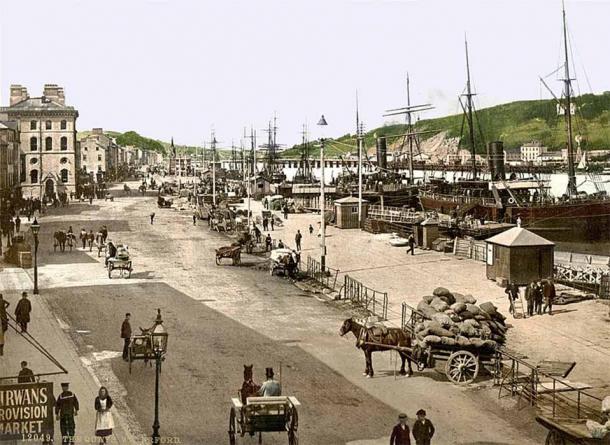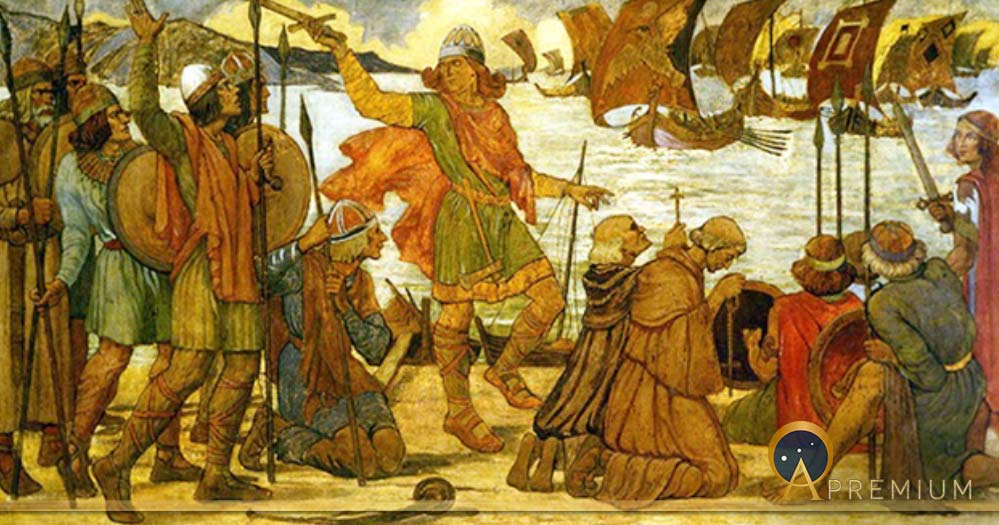Traces Of Viking Ivar the Boneless’ Dynasty At Waterford, Ireland
The first Viking raids recorded in Ireland date to 795 AD, and then they rapidly appear in the historic record. Traditionally the early Viking activity in Ireland falls into three phases, the first being a period of lightning hit-and-run raids which took place from the 790’s until the 820’s. This was followed by a phase of intensive Viking campaigning in the area dating to the 830’s when the Annals first begin to mention the presence of Viking bases known as longphorts - literally ship ports. This phase then ends in 902 when the Ui Imar (the Viking Dynasty founded by Ivar the Boneless) is expelled from Dublin, and many of the longphorts are thought to have been destroyed by Irish kings at this time. This then leads to a period during which more permanent Viking bases were established.

The quay at Waterford c. 1890–1900 (Public Domain)
Viking Presence in Waterford
The Irish city of Waterford lies in Co Waterford on the southeastern shore of Ireland in the province of Munster, on the river Suir at the point where it meets the Irish Sea. Waterford is the oldest city in Ireland and once bore the Norse name Veorafjoror, which means “ram fjord” for this earliest settlement was a Viking one. Over the past 50 years archaeology has revealed that Viking Waterford was focused on two areas. The first being the more widely known Viking Triangle located at the center of the modern city, the second being the earlier settlement harbor of Woodstown, six kilometers (3.7 miles) away. This was a longphort, a harbor and winter base, that only came to light during archaeological work undertaken in 2003 ahead of a road building project.
Traditionally it had been thought that Waterford was founded by a Viking chieftain called Sitric in 853 BC based upon the 12th-century account of Gerald of Wales. Gerald recounts that this was also the same year in which Limerick was founded by Ivarus and Dublin by Amlavus. Gerald tells that these three brothers were granted permission to found the harbors in Ireland for the purpose of commerce, adding that this was because they were too lazy to travel in order to trade. However, this tale must be taken as being rather apocryphal given that it was being written to deliberately discredit the Irish and that Gerald was writing much later after the events.
Like this Preview and want to read on? You can! JOIN US THERE ( with easy, instant access ) and see what you’re missing!! All Premium articles are available in full, with immediate access.
For the price of a cup of coffee, you get this and all the other great benefits at Ancient Origins Premium. And - each time you support AO Premium, you support independent thought and writing.
Rebecca Batley has a Bachelor’s degree in archaeology (University of Wales) and a Master’s degree in Classics. In the field she has worked on sites dating to the Bronze Age, Iron Age, Romano-British, Roman, Medieval, Tudor, Georgian and modern periods. Employed by the Louvre Museum, she researched and excavated at sites in Egypt, Syria, and Israel. She works at the Military Intelligence Archive to help to prepare World War One records for cataloguing and digitalisation and she is a part time History tutor.
Top Image: Viking landing at Dublin, 841, by James Ward (1851-1924) (Public Domain)
By: Rebecca Batley
















